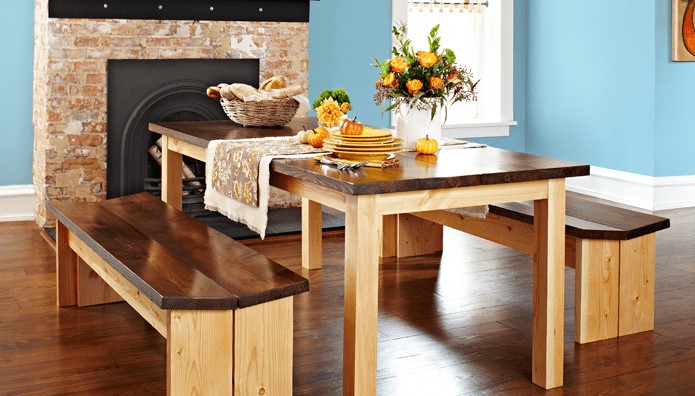 The Simple Dining Table: Build Your Own with These Easy Plans is a comprehensive guide that provides step-by-step instructions for constructing your own dining table. This guide is perfect for DIY enthusiasts who want to create a unique piece of furniture for their home. It includes detailed plans, material lists, and expert tips to make the process as easy as possible. Whether you’re a seasoned carpenter or a novice woodworker, these plans will help you build a simple, yet stylish dining table that will add charm to your dining room.
The Simple Dining Table: Build Your Own with These Easy Plans is a comprehensive guide that provides step-by-step instructions for constructing your own dining table. This guide is perfect for DIY enthusiasts who want to create a unique piece of furniture for their home. It includes detailed plans, material lists, and expert tips to make the process as easy as possible. Whether you’re a seasoned carpenter or a novice woodworker, these plans will help you build a simple, yet stylish dining table that will add charm to your dining room.
Simple Dining Table: Build Your Own with These Easy Plans
Building your own dining table can be a rewarding project that allows you to add a personal touch to your home decor. With a few simple plans and the right tools, you can create a beautiful, functional piece of furniture that will serve as the centerpiece of your dining room for years to come.
The first step in building your own dining table is to decide on the design. There are many different styles to choose from, ranging from traditional to modern. You might prefer a classic rectangular table with sturdy legs, or perhaps a round table with a pedestal base. Once you’ve chosen a design, you can start planning the dimensions. The size of your table will depend on the space available in your dining room and the number of people you typically host for meals.
After finalizing the design and dimensions, the next step is to gather the necessary materials. The type of wood you choose will greatly influence the look and durability of your table. Hardwoods like oak, maple, and walnut are popular choices for dining tables because they are strong and can withstand daily use. You’ll also need wood glue, screws, and other hardware to assemble the table.
Once you have your materials, you can start building. Begin by cutting the wood to the correct dimensions. This includes the tabletop, legs, and any additional pieces like aprons or supports. It’s important to measure twice and cut once to ensure accuracy. After cutting the pieces, sand them thoroughly to remove any rough edges and prepare them for staining or painting.
The next step is to assemble the table. Start by attaching the legs to the tabletop. This can be done using screws, dowels, or a combination of both. If your design includes an apron, attach it to the legs before securing them to the tabletop. Once the legs are attached, add any additional supports or braces as needed.
After the table is assembled, it’s time to finish it. This can be done with paint, stain, or a clear wood finish, depending on your preference. Applying a finish not only enhances the look of the table but also protects the wood from damage. Be sure to apply the finish in a well-ventilated area and allow it to dry completely before using the table.
Building your own dining table may seem like a daunting task, but with careful planning and a little patience, it can be a rewarding project. Not only will you end up with a beautiful piece of furniture, but you’ll also have the satisfaction of knowing you built it yourself.
Remember, the key to a successful DIY project is preparation. Take the time to plan your design, gather your materials, and understand the construction process before you start. With these simple plans, you can build a dining table that will be a cherished addition to your home for years to come.
In conclusion, building your own dining table is a feasible project that can add a unique touch to your home. With the right plans, materials, and a bit of effort, you can create a beautiful, functional piece of furniture that reflects your personal style and meets your dining needs. So why not take on the challenge and build your own dining table? It’s a project that’s sure to bring a sense of accomplishment and pride.In conclusion, building your own simple dining table with easy plans is a feasible and rewarding project. It allows for customization according to personal taste and space requirements. It can also be a cost-effective alternative to buying a ready-made table. The process enhances one’s carpentry skills and provides a sense of accomplishment.